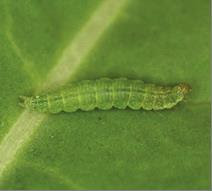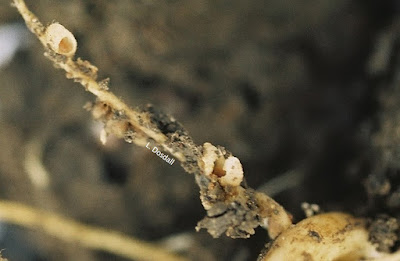The Prairie Crop Disease Monitoring Network (PCDMN) represents the combined effort of prairie pathologists working together to support in-field disease management in field crops. Information related to trajectory events based on forecast and diagnostic wind fields and cereal rust risk is experimental, and is offered to the public for informational purposes only. Read the OVERVIEW describing the collaborative nature of this effort and the methods employed.
Wind trajectory and cereal rust risk assessment and need for in-crop scouting in the Prairie region, June 16-22, 2020
1. Pacific Northwest – There moderate number of reverse wind trajectories that passed over the PNW region and into the prairies. Locations with the highest number of days with events (3-4) with reverse trajectories from the PNW included: Lethbridge (4) and Olds (3), AB; Regina (3), Saskatoon (3) and Yorkton (3), SK; and Brandon (3) and Dauphin (3), MB. Of note was the occurrence of 1-2 days with trajectory events that ended up in the Fort Vermilion, Grande Prairie, Manning, and Rycroft areas of the Peace Region of Alberta. Currently there appears to be relatively low levels of stripe rust development in the PNW, although this may change over the week, although later season (anthesis) fungicide applications may limit further stripe rust development in PNW winter wheat crops. Temperatures have been in the 15-20C range for most of Manitoba, southeastern Saskatchewan, the Lethbridge area, and the Peace Region. Other Prairie regions had average temperatures from June 15-21, 2020 of 11 to 15C. This past week, rainfall amounts were greatest across central regions of SK and eastern MB. In contrast, limited rainfall occurred in the Grande Prairie region and from Manning to High Level/Fort Vermilion, AB, and in large areas of central to western Manitoba. Winter wheat crops are progressing towards head emergence and flowering, while Prairie spring wheat development ranges from the end of the seedling stage to stem elongation. There have been reports of stripe rust in western Idaho and on June 16, 2020 from southern Alberta, specifically the County of Lethbridge. On June 19, 2020 there was a third report in Alberta with the observation of stripe rust in winter wheat yield trials at AAFC Beaverlodge. Given the appearance of stripe rust in the Nobleford area of the County of Lethbridge, and at Beaverlodge in the Country of Grande Prairie, farmers in these regions should be on the look out for stripe rust in wheat. Special focus should be on wheat fields seeded to varieties rated as susceptible or moderately susceptible. These recent observations in Alberta indicate that Prairie regional sources of inoculum may become more important with further crop and disease development. Thus, as of June 22, 2020 the risk of stripe rust appearance from the PNW or from regional sources is low to moderate. However, some locations may be at an increased stripe rust risk, especially where there were 3-4 reverse trajectory events from the PNW or in Prairie regions where stripe rust has been reported.
2. Texas-Oklahoma corridor – Currently, there is very limited leaf and stripe rust development in this corridor. Moreover, as the Texas and Oklahoma winter wheat crops continue to be harvested, this region no longer represents a significant source of cereal rust inoculum for movement into the Prairie region. Thus, as of June 22, 2020 the risk of leaf and stripe rust appearance from the Texas-Oklahoma corridor is limited and scouting for these diseases is not urgent.
3. Kansas to Nebraska corridor – Currently there appears to be relatively low levels of stripe rust development in the Kansas to Nebraska. Looking at specific locations in Prairie region and reverse trajectories, only 10 of 29 locations had only 1-3 days each with reverse trajectories originating over the states of Kansas and Nebraska from June 16-22, 2020, with the remaining locations having zero. Locations with the highest number of days with events (3) with reverse trajectories from the PNW included: Brandon (3) and Selkirk (3), MB. Eight locations in Saskatchewan and Manitoba had 1-2 days with events, while the remaining locations had no events from June 16 to 22, 2020 (Table 2). Temperatures have been in the 15-20C range for most of Manitoba, southeastern Saskatchewan, the Lethbridge area, and the Peace Region. Other Prairie regions had average temperatures from June 15-21, 2020 of 11 to 15C. This past week, rainfall amounts were greatest across central regions of SK and eastern MB. In contrast, limited rainfall occurred in the Grande Prairie region and from Manning to High Level/Fort Vermilion, AB, and in large areas of central to western Manitoba. Winter wheat crops are progressing towards head emergence and flowering, while Prairie spring wheat development ranges from the end of the seedling stage to stem elongation. Thus, as of June 22, 2020 the risk of leaf and stripe rust appearance from the Kansas-Nebraska corridor is limited and scouting for these diseases is not urgent. In Kansas the winter wheat crop is rapidly maturing with harvesting occurring in some areas, and thus no longer represents a significant source of rust inoculum. The Nebraska winter wheat crop has mostly headed and in some areas is starting to turn with harvest 1-2 weeks away. With the Nebraska winter wheat crop progressing towards maturity and harvest, and given limited reports of disease, this state is becoming less of a potential source of rust inoculum. There continue to be reports of low levels of stripe rust in South Dakota and Wisconsin. Thus, given the proximity to the Prairie region, these reports serve as a warning that farmers and crop scouts in the central to eastern Prairie region of Canada should be on the look out for stripe rust, especially in winter wheat fields.
4. Where farmers or consultants noticed stripe rust development on winter wheat in the fall of 2019, it is recommended to scout winter wheat fields that have resumed growth in spring 2020. Scouting is especially critical where the variety being grown is susceptible to stripe rust. Currently, there have been three reports of the initial appearance of stripe rust on winter wheat on June 5, 16, and 19, 2020 in the County of Lethbridge in southern Alberta and in the County of Grande Prairie in the Peace Region of Alberta. Given the appearance of stripe rust in the Counties of Lethbridge and Grande Prairie, farmers in these regions should be on the look out for stripe rust in wheat. Special focus should be on wheat fields seeded to varieties rated as susceptible or moderately susceptible.







































